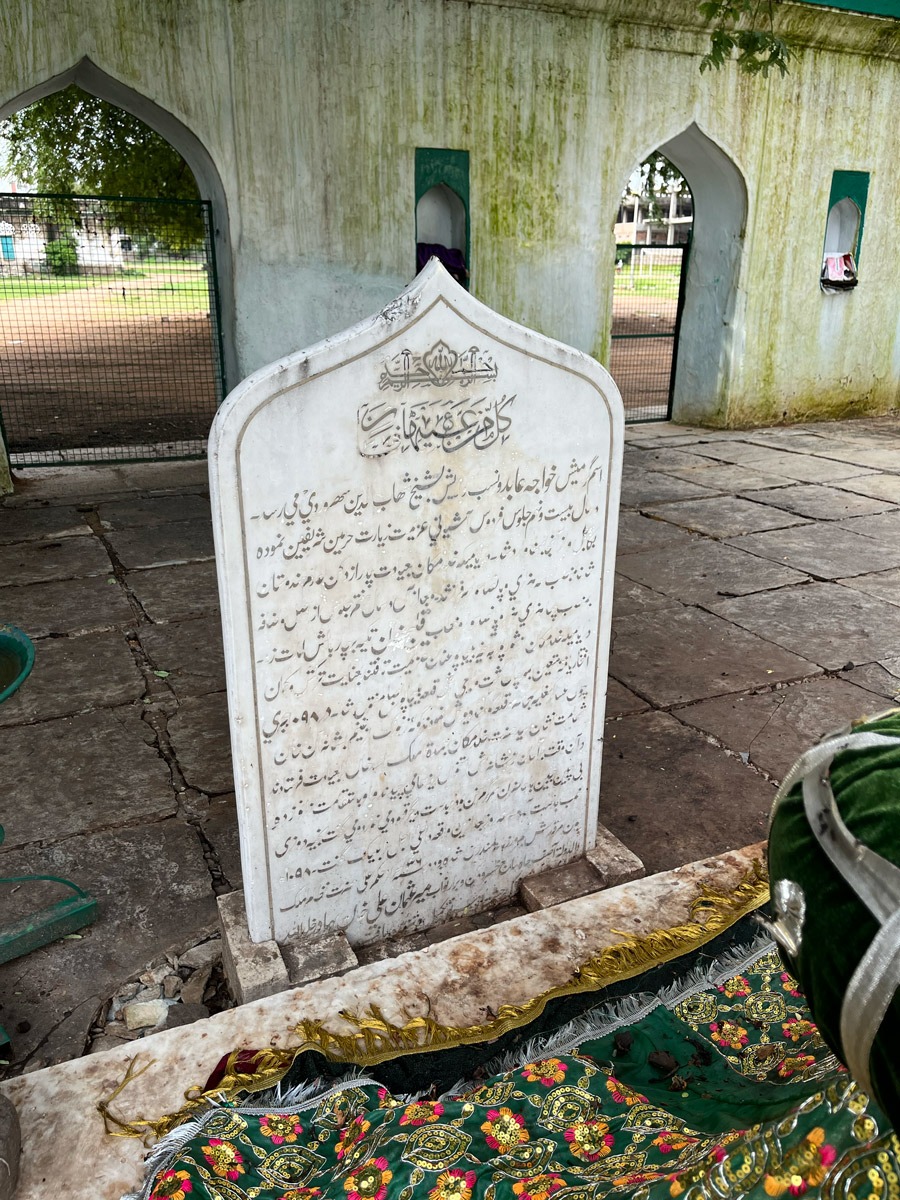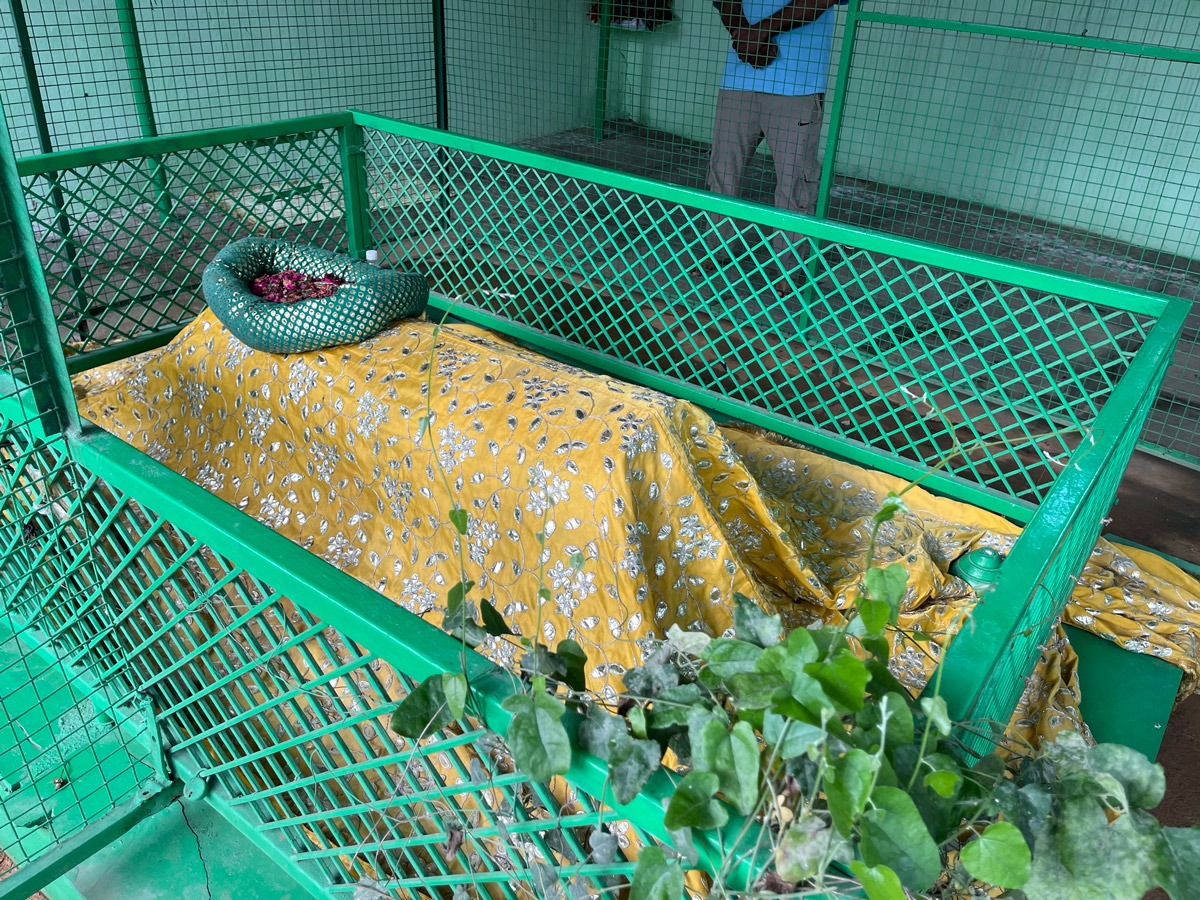05 Sep Dargah Qilich Khan
The man responsible for Hyderabad’s Nizam dynasty has not one but two graves in the city, and nobody knows about it
Chin Qilich Khan is a man with two graves. He is also arguably responsible for Hyderabad’s famous Nizam dynasty. Yet, despite this man’s extraordinary life-arc and death in this city, few Hyderabadis have heard of him.
Chin Qilich was born as Abid Khan Siddiqi in the early seventeenth century to a family of religious scholars near Samarkand (today’s Uzbekistan). He decided at an early age to turn his back on family tradition and become a warrior instead, giving up his pen for a sword.
Sometime around 1655, Abid Siddiqi arrived in India and joined the forces of the Mughal Emperor Shah Jahan. He was quickly noticed, and became the miliary tutor for Shah Jahan’s ambitious son Prince Aurungzeb, mentoring his young pupil on the art of warfare and military skill. It was Aurungzeb who bestowed on him the title “Chin Qilich Khan” in recognition of his combat skills.
Aurungzeb’s military guru, dies during the siege of Golconda
When the elderly Shah Jahan fell ill, Qilich Khan, sensing which way the wind was blowing, threw in his lot with Aurungzeb. It was a wise choice, for when Aurungzeb became the Emperor, Qilich Khan was rewarded with a string of governorships and promotions.
By the 1680s, Aurungzeb turned his gaze towards the Deccan, and Qilich Khan was asked to play the guiding hand. While the command of the Mughal forces for the siege of Golconda was given to his son, Ghazi-ud-din Khan, the experienced Qilich Khan accompanied the forces to get the job done.
Frustratingly for the Mughals, the Golconda siege lasted nearly eight months. While attempting to storm the forts’ massive walls, Qilich Khan was hit by shrapnel from a cannonball that severed his arm. Amazingly, he rode back to the Mughal camp, refusing to dismount. It is said that while surgeons attended to his broken bones, he was seen calmly sipping coffee. Qilich Khan died within three days and is buried in a tomb near Himayat Sagar. His severed arm was found some days later – identified by his ring – and is buried separately nearby.
The grandfather of the first Nizam, Asaf Jah I
Some weeks after Qilich Khan’s death, Golconda finally fell. Victory, however, came through treachery – with a military official in the Qutub Shahi army leaving a back door open for the Mughals to enter.
One of the first to storm the fort was Ghazi-ud-din Khan, Qilich Khan’s son and commander of the forces, who took the Qutub Shahi ruler, Abul Hasan, prisoner and handed him to Aurungzeb. So, what the father had died attempting to do was completed by the son.
Aurungzeb on his part, throughout his long reign, looked kindly upon Qilich Khan’s family. It may be a sense of gratitude towards his ex-tutor, or a feeling of guilt for his death; but Qilich Khan’s son and grandson were amply rewarded for their loyalty and competence. Ghazi-ud-din Khan held many senior positions, with the emperor himself prestigiously arranging his marriage with the wazir of Shah Jahan, Saadullah Khan’s daughter. Their son (which is, Qilich Khan’s grandson), was named Mir Qumar-ud-din by Aurungzeb, and taken under his wing by the monarch for mentoring. Qumar-ud-din later became the first Nizam and founder of Hyderabad state, Asaf Jah I.
I discover Qilich Khan’s quiet grave: forgotten, but not unattended
On a rain sodden monsoon day, under brooding grey clouds, I set out to discover the (two) graves of the remarkable Qilich Khan.
We drove towards Kismatpur, a fast-developing suburb of the city, along a winding road that skirted the Himayat Sagar lake. There were colorful stalls selling dragon-fruit and guavas, and the greenery looked even more lush and verdant than usual, washed clean by the rains.
A metal sign in Urdu and English welcomed us to the dargah of Qilich Khan. We stepped on to a vast, open field, with a solitary, crumbling building at its center (which I later understood was a madrassa) and what looked like the dargah visible at the far end. Boys in salwar-kameez played cricket around us, and goats grazed unhurriedly on one side. Massive tamarind trees, perhaps a hundred years old, dotted the open grounds.
 Open fields, a decrepit madrassa, massive tamarind trees – behind which lies Qilich Khan
Open fields, a decrepit madrassa, massive tamarind trees – behind which lies Qilich KhanThe boys interrupted their cricket long enough to point us towards the graves and mosque at the other end of the ground. We skirted the locked madrassa and walked towards an enclosure which was shaded under the protective covering of trees.
In front of us was a small compound with a neatly paved yard. As I pushed open a green iron door to enter, thick black ants plopped on to my palm, annoyed by the disturbance. They scurried across the screen of my mobile phone before I shook them free. Inside the compound were three well-tended graves draped in chadors. An overhanging, leafy tamarind tree provided shade and protection.
I took off my shoes and walked towards the graves, soaking in the quiet atmosphere. The tallest grave at the center was Qilich Khan’s. The two smaller graves on either side are unknown – perhaps they belonged to soldiers who fell in battle with him? Or to later khadims and khidmatgars of the dargah?
 Here rests Qilich Khan; overlooked and protected by the shade of tamarind trees
Here rests Qilich Khan; overlooked and protected by the shade of tamarind treesThere was silence, apart from the twittering of birds and the occasional rustle of a startled squirrel. I was alone in the presence of the amazing Qilich Khan. I touched the grave and sat beside it, lost in thoughts about the enormity of this man’s life. Today, when we consider a visit to Ladakh as being high adventure, Qilich Khan seemed the ultimate dare devil; born in a faraway land, exploring and adopting countries and cultures not his own, earning the trust of Aurungzeb, winning pivotal battles, rising to the Governorships of Ajmer and Multan, fathering a famous general and a grandson who started a celebrated dynasty, ultimately dying a brave and extraordinary death far from where he was born.
And now buried here, forgotten, in a nondescript corner of Hyderabad.
Qilich Khan’s weathered headstone had inscriptions written in Persian. I bent low to see whether I could read it. I managed the first few lines…
“Iss Mein Garmish Khwaja Abid Nasab-e-Raeesh Shiekh Shahabuddin Bahrvi Mi-rasheed….”
(Interred in this grave lies Khwaja Abid, a descendent of the noble lineage of Shiekh Shahabuddin Bahrvi, who ascended…) *
 The Persian scripted headstone of Qilich Khan’s grave
The Persian scripted headstone of Qilich Khan’s graveA chat with friendly Khadims, exchanging notes on Qilich Khan
Stepping away from the aura of Qilich Khan’s grave, we walked towards a mosque next door. A few bearded, elderly men were sitting and chatting beside the mosque. We greeted them and mentioned why we were here – to discover the story of Qilich Khan. They brought out chairs for us to sit and opened up with friendly banter.
Some of these men were khadims who looked after the dargah and mosque. They claimed their family had been here for generations and were originally from “Mughal khaandans”. They were aware of the significance of Qilich Khan and where he was from, about his story. We were shown the mosque and its recent renovations and invited to attend an urs which was held each September.
I also got a window into the world of Hyderabad’s ever expanding real estate and its potential conflict with heritage. We were told about how financially attractive these grounds now were (the open field surrounding Qilich Khan’s grave was at least 5 acres in size, worth many crores at today’s prices) and the difficulty of staving off land sharks.
We enquired about Qilich Khan’s severed arm and his second grave. The men knew where it was, about a kilometer from here. One from the group, Khalid, volunteered to show us the way.
And where is the arm?
We said our goodbyes and climbed back into our car, following Khalid’s scooter for a short distance along Kismatpur road, and stopping near a row of newly constructed apartments.
 Qilich Khan’s second grave with his severed arm (…or was it?)
Qilich Khan’s second grave with his severed arm (…or was it?)Beside the apartments that towered over it, was a small fenced enclosure with a single grave draped in a yellow cloth. There were a few people around, watching our car pull in. We started discussing the significance of the grave. There were many views; wasn’t this grave too big for just an arm? Could it possibly belong to another holy man? Was it probable for Qilich Khan to ride here, 5 kilometers from Golconda, with a severed arm? Such are the question marks of history.
* nasab-e-raeesh means “of noble lineage” in Farsi.
* Mi- Rasheed means “was ascending (to the divine)” in Farsi
Information:
- From the ORR, take exit number 18 (marked for TGPA or Telangana Police Academy). Pass the exit toll booths.
- You will arrive at the Appa junction circle. From here, follow the signs for Kismatpur and Dargah Qilich Khan.
- The road winds past private farmhouses to a small residential community, from where a sharp right turn gets you to a vast field. There are signs in Urdu and English for “Dargah Hazrat Khaja Abid Shaik Shahabuddin Soherwadi, Dargah Qulij Khan”.
- The site is easily reached through Google-map, spelt “Dargah Khalij Khan”.
Sources:
- “White Mughals”. By William Dalrymple. Published by Viking, 2002
- “The Journal of the Hyderabad Archaeological Society”. Printed at Times Press Bombay, 1918
- “The Mughal Conquest of South India”. By Navin Kumar Prem Kumar. Spring 2013.

